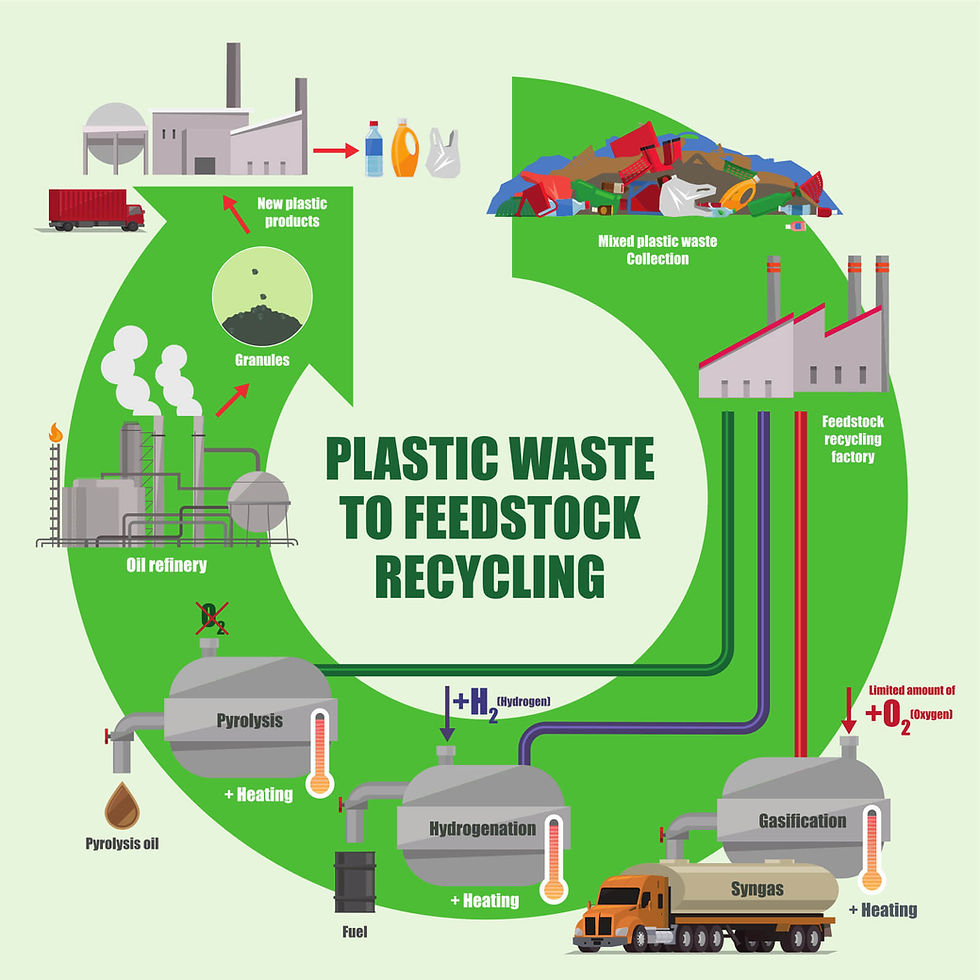Sustainability and Economic Impact: MaxFlux™ Technology in Action
- cemnar0
- Jul 17
- 2 min read

Introduction
Addressing plastic pollution demands solutions that are both sustainable and profitable. Sulzer’s MaxFlux hydrotreating technology offers operators a practical, advanced way to convert waste plastic pyrolysis oils (PPO) into valuable, ultra-clean products, all while improving carbon footprint and operational costs.
Environmental Benefits
Energy and Resource Savings
MaxFlux eliminates the need for large hydrogen recycle gas loops by dissolving hydrogen directly into the liquid phase, reducing compressor and utility requirements.
The high liquid flux operation enables superior mixing, translating into lower electricity and fuel gas consumption and simplified process control.
Lower Emissions and Waste
Efficient impurity removal (nitrogen, sulfur, halogens, silicon, metals) ensures hydrotreating products meet even the tightest downstream specifications, reducing off-spec waste and avoiding contamination issues.
The streamlined process minimizes undesirable byproducts and over-cracking, meaning less waste sent to landfill or incineration.
Reduced Carbon Footprint
The combination of less energy demand and higher product yields means a smaller CO₂ footprint compared to traditional hydrotreating.
Integration with broader plant utilities allows sites to better meet regulatory requirements for lower total emissions.
Economic Advantages
Lower Capital Investment
MaxFlux reactor designs remove the need for costly gas recycle systems, compressors, and complex internals, shrinking plant footprint and reducing capital expense for both grassroots and revamp projects.
Reduced Operating Expenses
No gas phase quench means fewer moving parts and less maintenance, while stabilized reaction temperatures minimize catalyst deactivation and reduce frequent change-out costs.
Higher yield of saleable product contributes directly to improved margins.
Longer Catalyst Life
Stable temperature profiles and excellent contaminant removal extend catalyst life, reducing replacement frequency and maintaining performance.
Supporting Circularity
MaxFlux makes it possible to transform mixed plastic waste into cracker-grade feedstocks suitable for new polymer production, advancing the transition to a truly circular plastics economy and reducing reliance on virgin fossil resources.
Sustainability Impact Table
Feature | Sustainability Benefit |
Direct hydrogen dissolution | Lower energy consumption, reduced CO₂ emissions |
No gas recycle loop | Simpler ops, reduced utility/maintenance costs |
Advanced impurity removal | Fewer byproducts and off-spec waste |
High product yield | More recycled back into value chains |
Longer catalyst life | Less waste, lower operational footprint |
Conclusion
Sulzer’s MaxFlux technology merges sustainability with economic value by lowering emissions, slashing operational costs, and enabling plastics-to-plastics circularity. Its adoption empowers operators to meet green targets while protecting the bottom line, offering a future-oriented solution for modern chemical and recycling plants.



